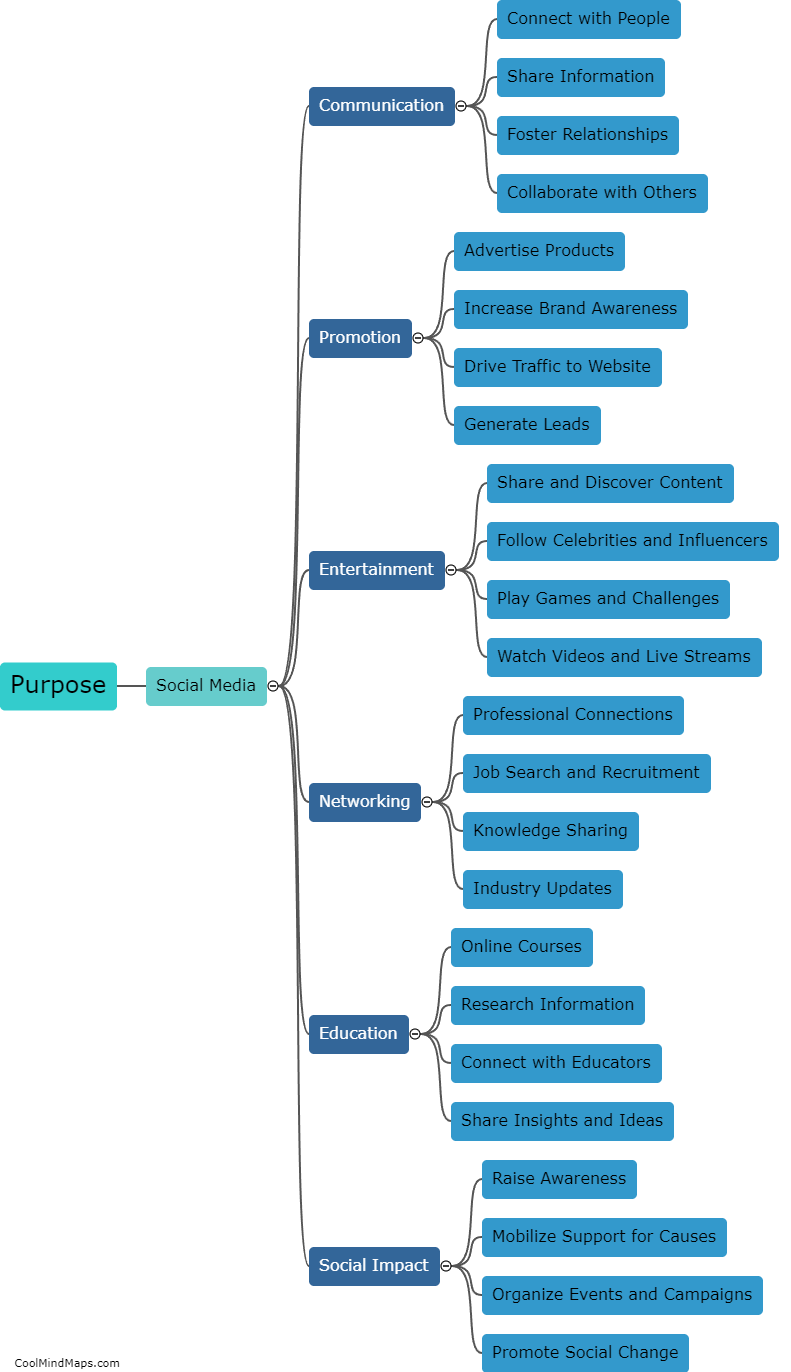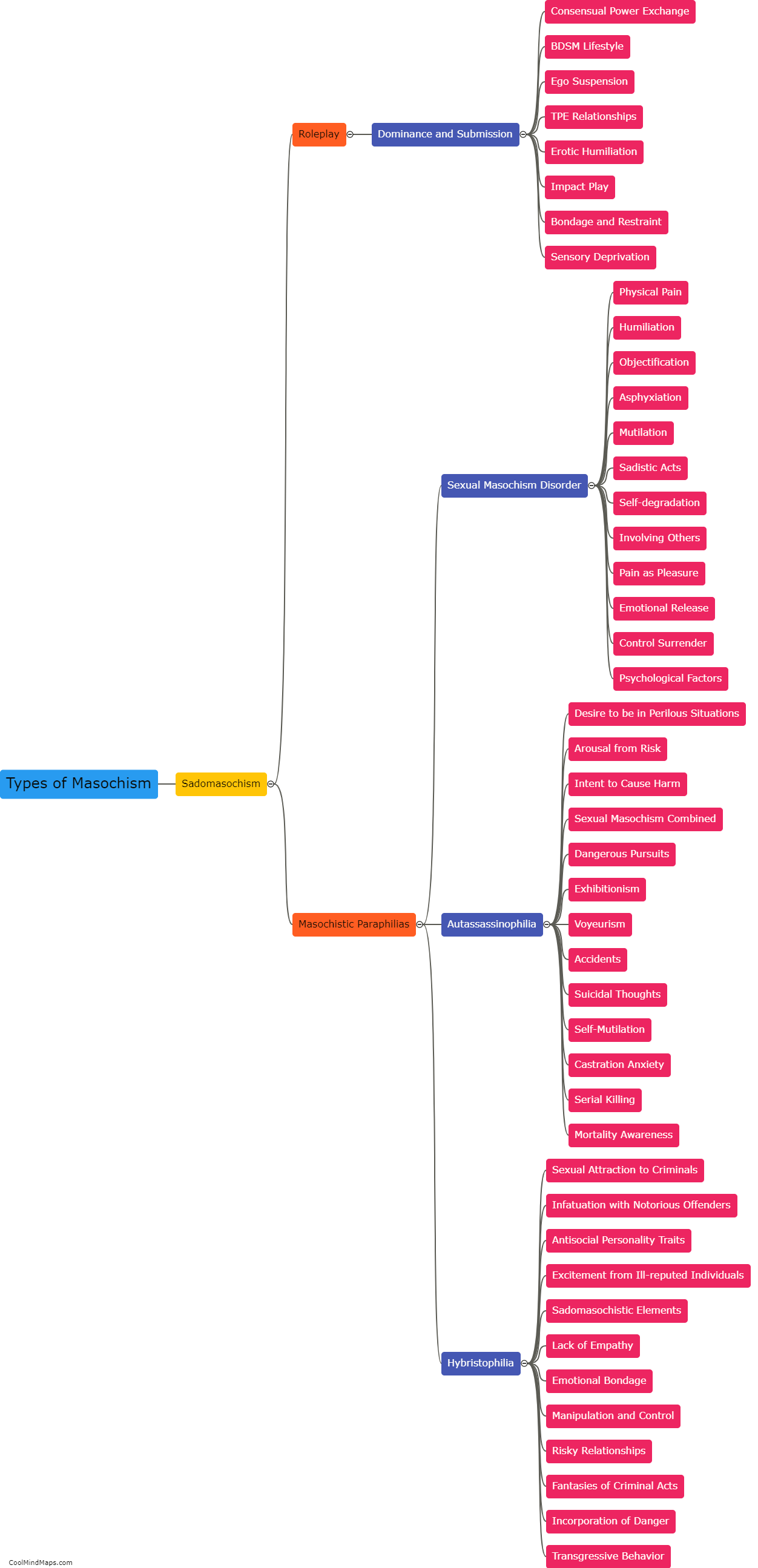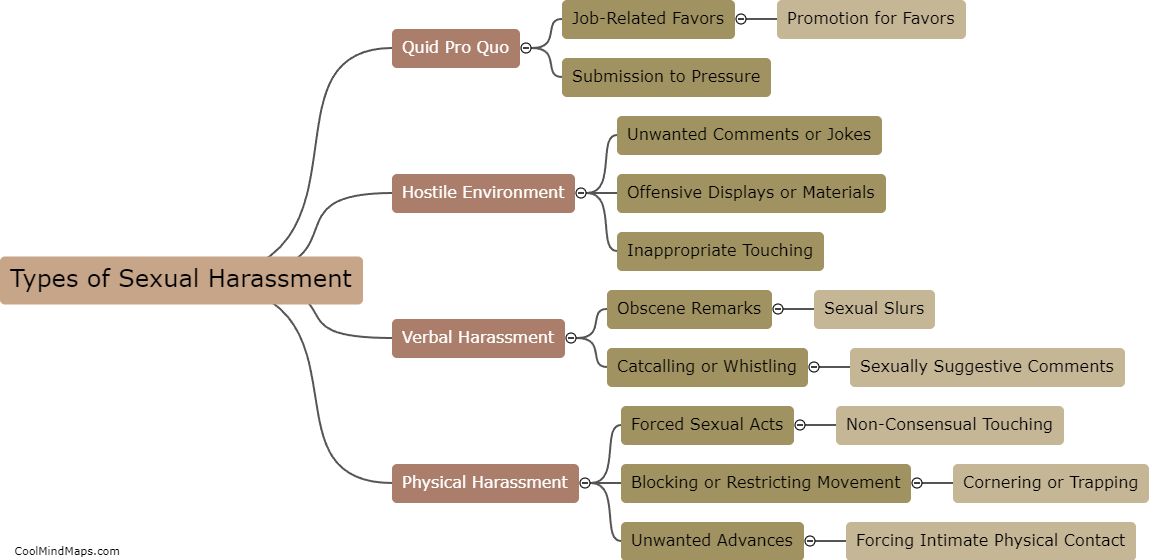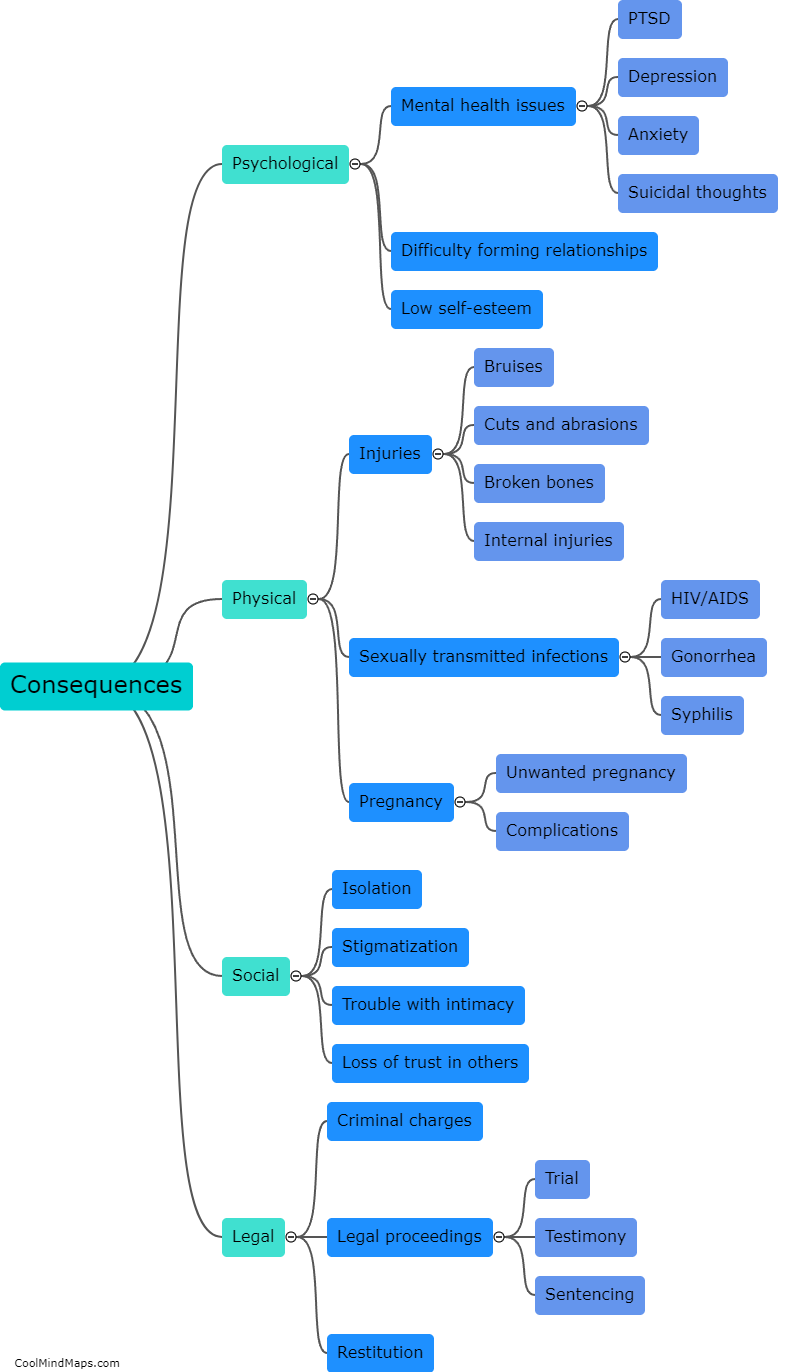How can consent be effectively communicated?
Consent is crucial in any relationship or interaction involving personal boundaries and actions. Effectively communicating consent requires clear and open communication between all parties involved. It starts with active listening, understanding, and respecting the boundaries and desires of others. Non-verbal cues, such as body language and gestures, can also play a significant role in the communication of consent. However, verbal communication remains the most important aspect. It involves clearly expressing one's desires, limits, and intentions, while also actively seeking and obtaining affirmative consent from the other party. Consent should be enthusiastic, ongoing, and specific, and any uncertainty or changes should be openly discussed. Creating an environment where individuals feel comfortable and safe expressing their boundaries is essential to ensure that consent is effectively communicated and understood.

This mind map was published on 19 December 2023 and has been viewed 85 times.











